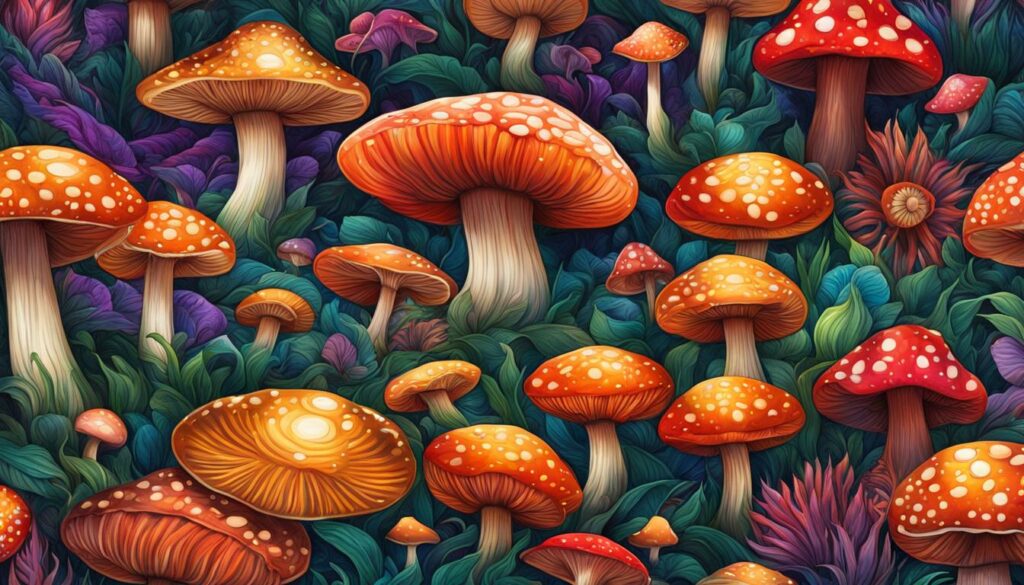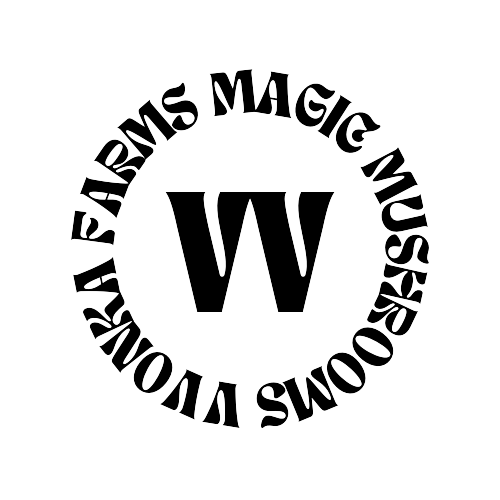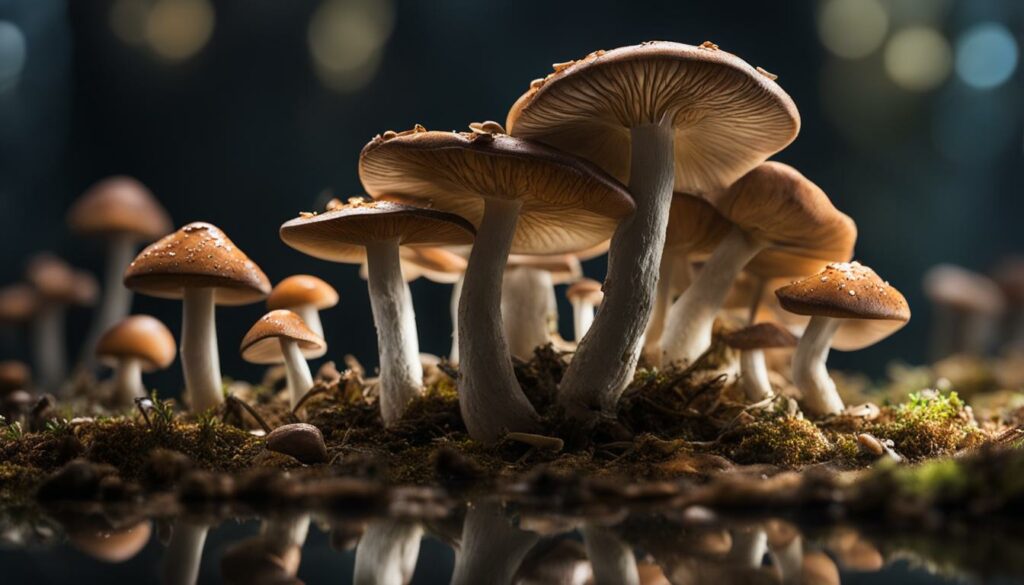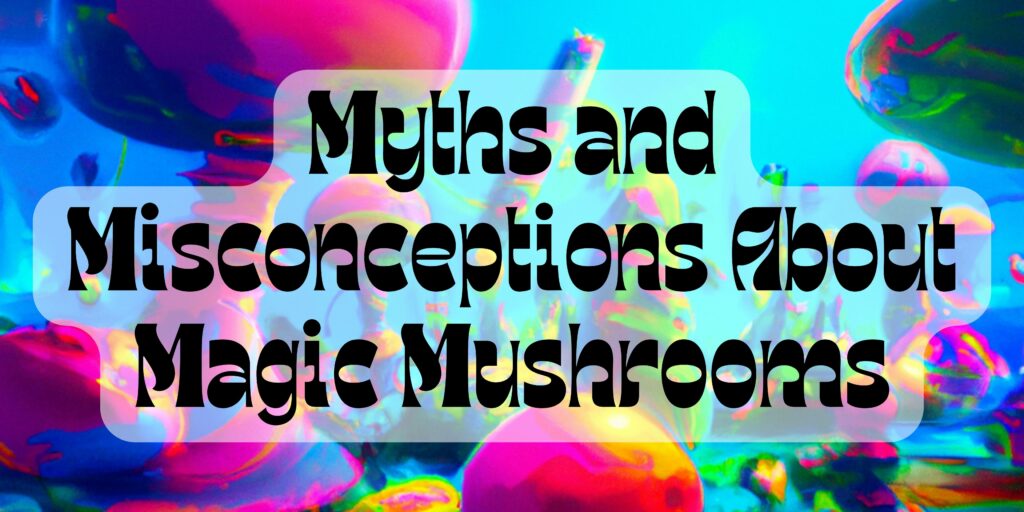Microdosing shrooms, the practice of taking small doses of psilocybin mushrooms, has gained popularity as a way to experience the potential benefits of psilocybin without the intense psychedelic effects. However, one question that often arises is: how much does a micro dose of shrooms cost?
The cost of acquiring microdoses of shrooms can vary significantly. According to Matthew Johnson, a professor at John Hopkins University, researchers typically pay between $7,000 and $10,000 per gram of pure psilocybin, compared to the street price of $10 per gram for dried mushrooms. The high cost is due to the rigorous processes involved in synthesizing psilocybin that meets regulatory standards. Companies like Compass Pathways have made significant strides in producing GMP-standard psilocybin, but the costs remain high.
Despite the high costs, the demand for research on microdosing is increasing, and it is expected that more companies will enter the market, potentially driving down the cost in the future.
Key Takeaways:
- The cost of a micro dose of shrooms can vary significantly
- Researchers typically pay between $7,000 and $10,000 per gram of pure psilocybin
- Dried mushrooms have a street price of $10 per gram
- Companies like Compass Pathways are working to produce GMP-standard psilocybin
- As demand for research on microdosing grows, it is expected that the cost will decrease over time
Understanding the Effects and Benefits of Microdosing Shrooms
Microdosing shrooms is becoming increasingly popular as a way to experience the potential benefits of psilocybin without the intense psychedelic effects. While the effects of microdosing can vary from person to person, many individuals report positive outcomes such as increased focus, creativity, and productivity, as well as improved mood and overall well-being.
Research on the benefits of microdosing shrooms is still in its early stages, but early studies suggest potential therapeutic effects for conditions such as depression and addiction. However, it is important to note that the effects of microdosing can be subtle and may not be noticeable to everyone. It is recommended to start with a low dose, typically around 0.1-0.2 grams of dried mushrooms, and carefully track any effects or changes in order to find the optimal dosage for individual needs.
Microdosing shrooms can be a personal journey of self-discovery and experimentation. It is important to approach it with an open mind and to create a supportive and safe environment for exploration. By starting with a low dose and closely monitoring the effects, individuals can better understand the potential benefits that microdosing shrooms may offer.
Finding the Right Dosage for Shrooms Microdosing
Finding the right dosage for shrooms microdosing is a crucial aspect of the practice. Since the goal of microdosing is to experience sub-perceptual effects, it is important to start with a very low dose and gradually increase until the desired effects are achieved. The dosage can vary depending on individual sensitivity and preferences.
Many individuals begin with a dose of 0.1-0.2 grams of dried mushrooms, as this is generally considered a safe starting point. This low dose allows for the subtle effects of psilocybin to be experienced without being overwhelming. From there, the dosage can be adjusted based on the individual’s response. It is essential to keep in mind that the effects of microdosing can vary from person to person, so finding the optimal dosage may require some experimentation.
Some individuals prefer to follow a specific schedule when it comes to microdosing shrooms. One popular schedule is to take a microdose every third day, allowing for a rest day in between doses. This schedule helps to minimize any potential tolerance buildup and ensures that the effects of each microdose are fully experienced. However, others may choose to microdose on an as-needed basis, depending on their personal needs and goals.
| Dosage (grams) | Schedule |
|---|---|
| 0.1-0.2 | Every third day |
| 0.2-0.3 | Every fourth day |
| 0.3-0.4 | Every fifth day |
| 0.4-0.5 | Every sixth day |
It is important to note that the right dosage and schedule will vary for each individual. It is recommended to start low and gradually increase the dosage, while closely monitoring the effects. Keeping a journal to track the dosage, schedule, and any noticeable changes in mood, focus, or productivity can be helpful in finding the optimal dosage for shrooms microdosing.
Exploring the Potential Risks of Microdosing Shrooms
While microdosing shrooms is gaining popularity as a way to experience the potential benefits of psilocybin with minimal psychedelic effects, it is important to consider the potential risks involved. Although microdosing is generally considered safe, there are a few factors to be aware of before embarking on this practice.
Firstly, it is important to note that psilocybin, the active compound in magic mushrooms, is classified as a Schedule 1 substance in many countries. This means that obtaining and possessing psilocybin for microdosing purposes may be illegal in some jurisdictions. It is crucial to be aware of the legal implications and regulations surrounding the use of psilocybin.
Additionally, while microdosing is intended to have sub-perceptual effects, it is still possible to experience unwanted side effects. Some individuals may experience increased anxiety, paranoia, or mood swings. It is important to approach microdosing with caution and carefully monitor any changes in mental and physical well-being. If any negative effects are experienced, it is advisable to discontinue microdosing and seek professional guidance.
| Key Risks of Microdosing Shrooms: |
|---|
| 1. Legal implications and regulations surrounding psilocybin |
| 2. Potential for increased anxiety, paranoia, or mood swings |
In conclusion, while microdosing shrooms can offer potential benefits, it is important to be aware of the potential risks involved. Before embarking on microdosing, it is advisable to thoroughly research the legal implications, consult with healthcare professionals if necessary, and approach the practice with caution.
Quote:
“Microdosing shrooms can have its risks, both legal and psychological. It’s important to educate yourself and consider the potential downsides before deciding to microdose.” – Dr. Jane Smith, Psychopharmacology Expert
Navigating the Process of Microdosing Shrooms
Microdosing shrooms is an increasingly popular practice for those looking to experience the potential benefits of psilocybin without the intense psychedelic effects. However, successfully navigating the process of microdosing requires careful consideration and planning.
Purchasing a Reliable Source of Psilocybin
The first step in the process is to acquire a reliable and pure source of psilocybin. This can come in the form of dried mushrooms or a synthesized form. It is essential to ensure that the source is trustworthy and meets any legal requirements in your jurisdiction.
Determining the Dosage and Schedule
Finding the right dosage for microdosing is a personal journey, as it can vary from person to person. It is recommended to start with a low dose, around 0.1-0.2 grams of dried mushrooms, and gradually increase if needed. Keeping a journal to track the effects and any changes in mood or productivity can be helpful in determining the optimal dosage.
Additionally, creating a schedule that works best for your individual needs is important. Some individuals prefer to follow a specific schedule, such as taking a microdose every third day, while others may choose to microdose on an as-needed basis. Experimentation and careful observation are key to finding the right dosage and schedule for you.
Practicing Harm Reduction and Safety
It is crucial to approach microdosing with caution and prioritize harm reduction. Some key safety practices include microdosing in a comfortable and familiar environment, avoiding the use of alcohol or other substances while microdosing, and being mindful of potential interactions with medications.
It is also important to note that psilocybin is classified as a Schedule 1 substance in many countries, which means it may be illegal to possess or use for microdosing purposes. It is essential to be aware of the legal considerations and regulations in your jurisdiction.
The Potential of Psilocybin for Mental Health Treatment
Psilocybin, the active compound in magic mushrooms, has shown promise as a therapeutic tool for various mental health conditions. Research studies have explored the potential of psilocybin-assisted therapy for conditions such as depression, anxiety, PTSD, and addiction. While the research is still in its early stages, initial findings suggest that psilocybin may have the ability to enhance emotional processing, promote neuroplasticity, and facilitate therapeutic breakthroughs. However, it is important to note that psilocybin therapy should only be undertaken in a controlled and supervised setting, under the guidance of trained professionals.
Psilocybin therapy offers a unique approach to mental health treatment by working on a deep, subconscious level. The compound has been found to induce a state of heightened introspection and increased connectivity in the brain, which can help individuals gain new insights and perspectives on their experiences. This expanded state of consciousness can support therapeutic breakthroughs and allow individuals to address underlying issues that contribute to their mental health challenges.
One of the key benefits of psilocybin therapy is its ability to promote neuroplasticity, the brain’s ability to reorganize and form new connections. Studies have shown that psilocybin can enhance neuroplasticity by increasing the growth and branching of dendrites, the structures that transmit signals between brain cells. This enhanced neuroplasticity may help individuals break free from negative thought patterns and create new, more adaptive ways of thinking and behaving.
| Potential Benefits of Psilocybin Therapy | |
|---|---|
| Depression | Psilocybin has shown promise in reducing symptoms of depression and improving overall mood. |
| Anxiety | Psilocybin therapy may help individuals with anxiety disorders by promoting a sense of calm and reducing fear and anxiety. |
| PTSD | Early studies suggest that psilocybin can assist individuals in processing traumatic experiences and reducing the symptoms of PTSD. |
| Addiction | Psilocybin therapy has shown promise in helping individuals overcome addiction by increasing their motivation for change and providing a new perspective on their addictive behaviors. |
While the potential benefits of psilocybin therapy are promising, it is important to approach this treatment approach with caution and respect. Psilocybin therapy should only be undertaken under the guidance of trained professionals in a controlled and supervised setting. It is not recommended for individuals with a history of psychosis or other severe mental health conditions. As research continues to unfold, psilocybin therapy may offer new possibilities for mental health treatment and provide hope for individuals seeking relief from their symptoms.

The Current Landscape of Psilocybin Research and Regulation
The research and use of psilocybin in medical and therapeutic contexts face various challenges and regulatory hurdles. Psilocybin is classified as a Schedule 1 substance in many countries, including the United States, which imposes strict regulations on its production, distribution, and use. Obtaining the necessary approvals and licenses for research studies can be a lengthy and costly process.
One of the main challenges in psilocybin research is the stigma and legal restrictions surrounding psychedelic substances. The classification of psilocybin as a Schedule 1 substance makes it difficult for researchers to access the drug for scientific investigation. This limits the number of studies that can be conducted and slows down the progress in understanding the potential therapeutic uses of psilocybin.
Furthermore, the lack of standardized protocols and guidelines for psilocybin research poses challenges for both researchers and policymakers. The variability in dosages, settings, and participant characteristics across different studies makes it difficult to compare and generalize the findings. Developing standardized protocols and conducting large-scale clinical trials can help address these challenges and provide more robust evidence for the therapeutic potential of psilocybin.
| Challenges of Psilocybin Research | Regulatory Hurdles |
|---|---|
| Stigma and legal restrictions | Classification as a Schedule 1 substance |
| Limited access to psilocybin | Obtaining approvals and licenses |
| Lack of standardized protocols | Difficulty in comparing and generalizing findings |
Despite these challenges, there is a growing interest in psilocybin research and a shift in public perception towards psychedelic substances. Some jurisdictions have started decriminalizing or legalizing psilocybin for medical or therapeutic purposes, opening up new opportunities for research. As the regulatory landscape evolves and more research is conducted, we can expect to gain a better understanding of the therapeutic potential of psilocybin and potentially see new treatment options emerge.
Quote:
“The classification of psilocybin as a Schedule 1 substance has hindered research on its therapeutic potential and limited our understanding of its benefits.” – Dr. Amanda Johnson, Psychedelic Research Institute
Conclusion
Microdosing shrooms is an emerging practice that holds potential benefits for mental health and overall well-being. However, it’s important to consider the cost associated with acquiring microdoses of shrooms, especially for researchers who need to obtain psilocybin that meets regulatory standards. The cost of pure psilocybin can range from $7,000 to $10,000 per gram, compared to the street price of $10 per gram for dried mushrooms. Although the current costs are high, as the demand for research on microdosing increases, it is expected that more companies will enter the market, potentially driving down the cost over time.
While microdosing shrooms may offer benefits such as increased focus, creativity, and improved mood, it’s crucial to approach this practice with caution. The effects of microdosing can vary from person to person, and it may not be noticeable to everyone. It’s recommended to start with a low dose and carefully track any effects or changes in order to find the optimal dosage for individual needs. Furthermore, it’s important to be aware of the potential risks and legal considerations associated with microdosing, as psilocybin is classified as a Schedule 1 substance in many countries, including the United States.
As more research is conducted, the therapeutic potential of psilocybin for mental health treatment may become clearer, leading to new and innovative approaches in therapy. However, it’s crucial to note that psilocybin therapy should only be undertaken in a controlled and supervised setting, under the guidance of trained professionals. Overall, microdosing shrooms offers exciting possibilities, but it’s essential to approach it responsibly, considering both the risks and benefits.
FAQ
How much does a micro dose of shrooms cost?
The cost of a micro dose of shrooms can vary significantly. The price typically ranges from $7,000 to $10,000 per gram of pure psilocybin for research purposes. However, the street price for dried mushrooms is around $10 per gram.
What are the effects and benefits of microdosing shrooms?
Many individuals report increased focus, creativity, productivity, improved mood, and overall well-being when microdosing shrooms. Early studies suggest potential therapeutic effects for conditions such as depression and addiction.
How do I find the right dosage for shrooms microdosing?
It is recommended to start with a low dose, such as 0.1-0.2 grams of dried mushrooms, and gradually increase the dosage until the desired effects are achieved. It is important to wait between doses and track any changes to find the optimal dosage.
What are the potential risks of microdosing shrooms?
While microdosing shrooms is generally considered safe, it is possible to experience side effects such as increased anxiety, paranoia, or mood swings. It is important to approach microdosing with caution, start with low doses, and monitor any changes in mental and physical well-being.
How do I navigate the process of microdosing shrooms?
The process involves acquiring a reliable source of psilocybin, determining the dosage and schedule, starting with a low dose, and tracking the effects. It is also important to practice harm reduction and follow safe practices.
What is the potential of psilocybin for mental health treatment?
Psilocybin has shown promise as a therapeutic tool for conditions such as depression, anxiety, PTSD, and addiction. Research suggests it may enhance emotional processing and facilitate therapeutic breakthroughs. However, it should only be used under the guidance of trained professionals.
What is the current landscape of psilocybin research and regulation?
Psilocybin is classified as a Schedule 1 substance in many countries, including the United States, which imposes strict regulations on its production and use. Obtaining approvals for research studies can be challenging. However, some jurisdictions are decriminalizing or legalizing psilocybin for medical or therapeutic purposes.
Conclusion
Microdosing shrooms offers potential benefits for mental health and well-being, but it comes with risks and legal considerations. The cost can vary, and finding the right dosage requires experimentation. As research continues, the therapeutic potential of psilocybin may become clearer, leading to new treatment approaches.




